Governance und Finanzierung
Diese Forschungsgruppe untersucht traditionelle und moderne Ansichten über Corporate Governance auf den Finanzmärkten. Sie trägt dazu bei, die Wirksamkeit verschiedener Governance-Mechanismen bei der Auswahl von Talenten, der Schaffung von Anreizen und der Bindung an das Unternehmen zu verstehen. Die Gruppe untersucht auch, wie verschiedene Stakeholder die Corporate Governance beeinflussen.
Forschungscluster
Finanzresilienz und RegulierungIhr Kontakt

- Abteilung Finanzmärkte
Referierte Publikationen
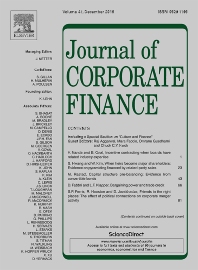
Stock Liquidity, Empire Building, and Valuation
in: Journal of Corporate Finance, 2021
Abstract
We conjecture that high stock liquidity negatively affects firm valuation by inducing inefficient investment. Using takeovers of public targets to study the empire-building motive, we find that a liquid firm is more likely than an illiquid firm to acquire a public firm. Such a takeover by a bidder with higher stock liquidity destroys bidder value to a larger degree. These patterns occur in both stock and cash acquisitions and hold after we use decimalization of tick size as a quasi-exogenous shock to stock liquidity. Finally, we show that financial constraints and corporate governance play important roles in the effects of stock liquidity on empire building in mergers and acquisitions.
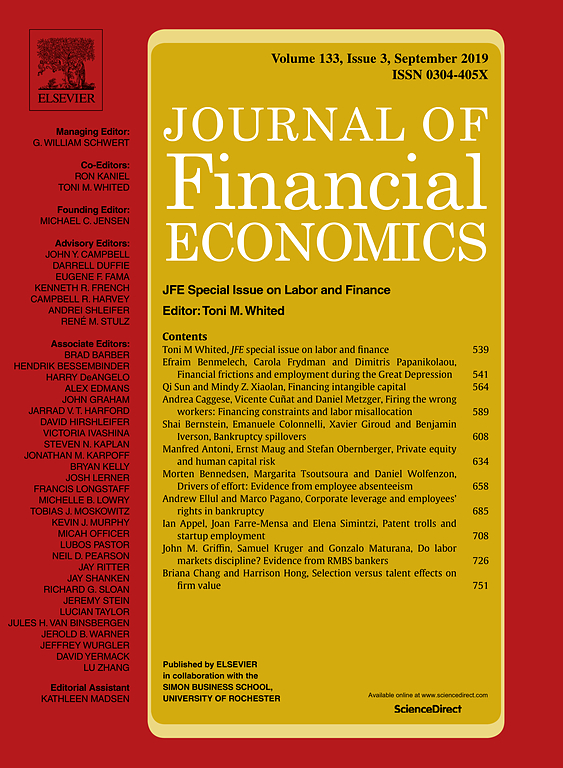
Do Activist Hedge Funds Target Female CEOs? The Role of CEO Gender in Hedge Fund Activism
in: Journal of Financial Economics, Nr. 1, 2021
Abstract
Using a comprehensive US hedge fund activism dataset from 2003 to 2018, we find that activist hedge funds are about 52% more likely to target firms with female CEOs compared to firms with male CEOs. We find that firm fundamentals, the existence of a “glass cliff,” gender discrimination bias, and hedge fund activists’ inherent characteristics do not explain the observed gender effect. We also find that the transformational leadership style of female CEOs is a plausible explanation for this gender effect: instead of being self-defensive, female CEOs are more likely to communicate and cooperate with hedge fund activists to achieve intervention goals. Finally, we find that female-led targets experience greater increases in market and operational performance subsequent to hedge fund targeting.
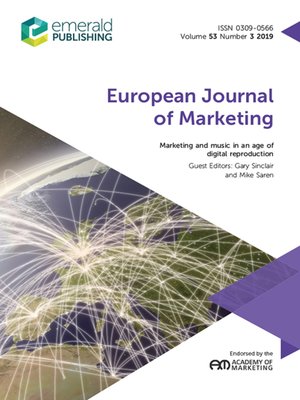
Executives with Customer Experience and Firm Performance in the B2B Context
in: European Journal of Marketing, Nr. 7, 2021
Abstract
<i>Purpose:</i> This paper aims to examine the presence of an executive with customer experience (ECE) in a supplier firm’s top management team (TMT). The role of ECE presence remains understudied in the marketing literature. This study attempts to examine the relationship between ECE presence and firm performance. <i>Design/methodology/approach:</i> This paper draws on the resource-based view of the firm and adopts a panel firm fixed effects estimator to test the proposed hypotheses. The empirical analysis uses a sample of 1,974 firm-year observations with 489 unique supplier firms. Selection-induced endogeneity is mitigated through the Heckman procedure. <i>Findings:</i> ECE presence improves firm performance. Additionally, firms benefit less from ECE presence if a board member with customer experience (BCE) is also present, if a chief executive officer commands a higher pay slice (compared to other executives), and if a TMT is more functionally diversified. However, ECE presence is particularly beneficial if the overall economy is in contraction. Comparing the functional positions held by ECEs reveals that ECE in the marketing function (as a chief marketing officer) offers the largest benefit to an average supplier firm. ECE presence is also associated with other firm outcomes (e.g. bankruptcy odds, innovation and customer orientation).
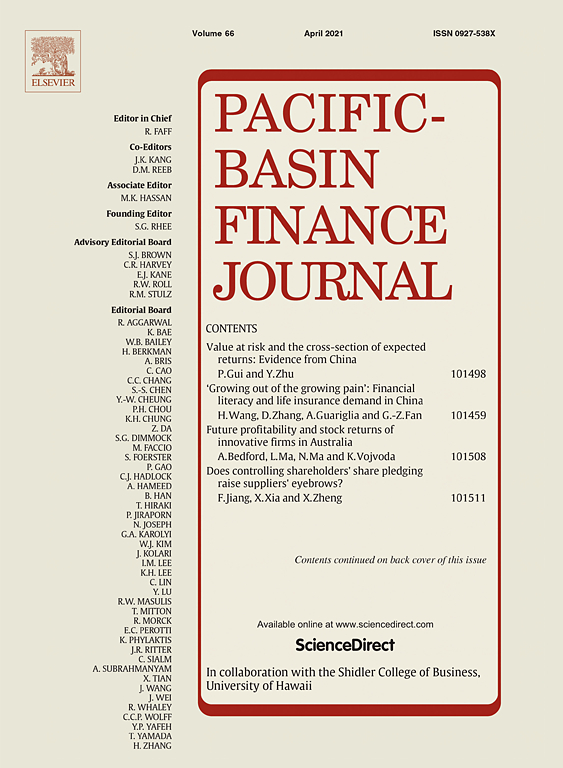
The Effect of Language on Investing: Evidence from Searches in Chinese Versus English
in: Pacific-Basin Finance Journal, June 2021
Abstract
This study examines the language effect on investing behavior in local stock markets for local- and foreign-language investors using Google search records. First, we find that attention to a local language stimulates attention to a foreign language, increases abnormal news coverage, and has better predictability on stock returns. Second, investors who do Google searches in the local language react faster to a news event's shock than those who search in the foreign language. Third, only attention to the local language can reduce the price drift of an earnings surprise. Last, firm-level information asymmetry is a channel for local advantage. Therefore, we suggest that investors who use a stock market's local language have a local advantage when seeking more profitable investment opportunities in that stock market.
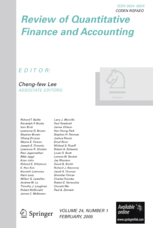
Agency Cost of CEO Perquisites in Bank Loan Contracts
in: Review of Quantitative Finance and Accounting, May 2021
Abstract
This study investigates the association between CEO perquisites and bank loan spreads. We collect detailed data on CEO perquisites from the proxy statements of S&P 500 firms between 1993 and 2015 to study this issue. The empirical evidence supports the agency cost view that the lending banks demand significantly higher returns (spread), more collateral, and stricter covenants from firms with higher CEO perquisites. We further confirm that the effect of these perquisites remains after we control for various corporate governance and agency cost factors. We conclude that banks consider CEO perquisites as a type of agency cost when they make lending decisions.
Arbeitspapiere
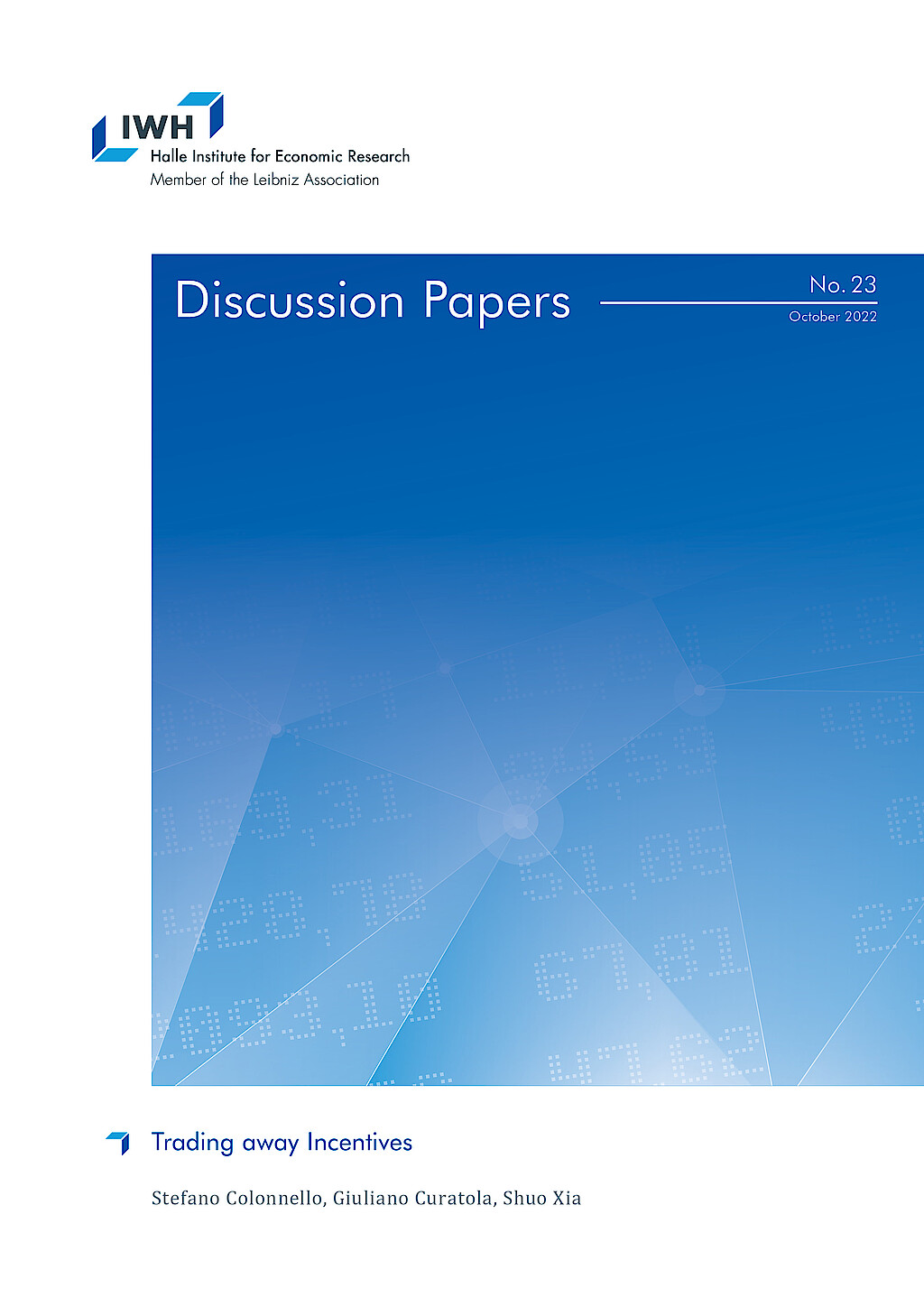
Trading away Incentives
in: IWH Discussion Papers, Nr. 23, 2022
Abstract
Equity pay has been the primary component of managerial compensation packages at US public firms since the early 1990s. Using a comprehensive sample of top executives from 1992-2020, we estimate to what extent they trade firm equity held in their portfolios to neutralize increments in ownership due to annual equity pay. Executives accommodate ownership increases linked to options awards. Conversely, increases in stock holdings linked to option exercises and restricted stock grants are largely neutralized through comparable sales of unrestricted shares. Variation in stock trading responses across executives hardly appears to respond to diversification motives. From a theoretical standpoint, these results challenge (i) the common, generally implicit assumption that managers cannot undo their incentive packages, (ii) the standard modeling practice of treating different equity pay items homogeneously, and (iii) the often taken for granted crucial role of diversification motives in managers’ portfolio choices.
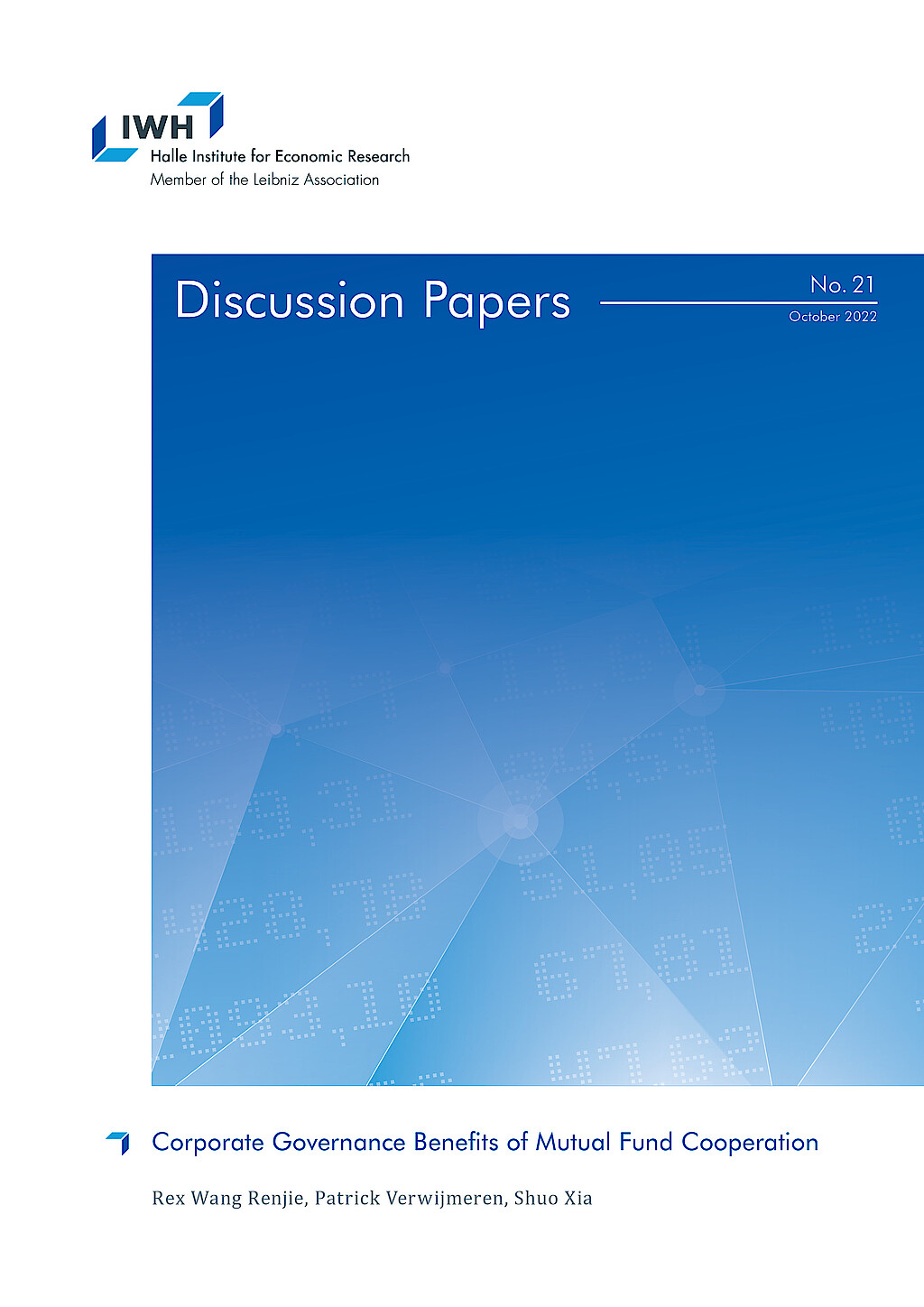
Corporate Governance Benefits of Mutual Fund Cooperation
in: IWH Discussion Papers, Nr. 21, 2022
Abstract
Mutual fund families increasingly hold bonds and stocks from the same firm. We study the implications of such dual holdings for corporate governance and firm decision-making. We present evidence that dual ownership allows financially distressed firms to increase investments and to refinance by issuing bonds with lower yields and fewer restrictive covenants. As such, dual ownership reduces shareholder-creditor conflicts, especially when families encourage cooperation among their managers. Overall, our results suggest that mutual fund families internalize the shareholder-creditor agency conflicts of their portfolio companies, highlighting the positive governance externalities of intra-family cooperation.

Why Do Workers at Larger Firms Outperform?
in: Working Paper, 2020
Abstract
Workers at larger firms outperform on average. For example, equity analysts working for more reputable brokerage firms produce more accurate earnings forecasts. Analysts employed by the highest ranked brokerages are about 6% more accurate than those employed by the lowest ranked brokerages, which is equivalent to an advantage of 17.5 years of more experience. This outperformance is driven by two significant effects: more reputable firms provide more resources that improve analysts' forecasting ability (influence), while more reputable firms also attract more talented candidates (sorting). We estimate a two-sided matching model to disentangle these two effects. We find that the direct influence effect accounts for 73% of the total impact while the sorting effect accounts for the remaining 27%.

Lame-Duck CEOs
in: SSRN Working Papers, 2018
Abstract
We examine the relationship between protracted CEO successions and stock returns. In protracted successions, an incumbent CEO announces his or her resignation without a known successor, so the incumbent CEO becomes a “lame duck.” We find that 31% of CEO successions from 2005 to 2014 in the S&P 1500 are protracted, during which the incumbent CEO is a lame duck for an average period of about 6 months. During the reign of lame duck CEOs, firms generate an annual four-factor alpha of 11% and exhibit significant positive earnings surprises. Investors’ under-reaction to no news on new CEO information and underestimation of the positive effects of the tournament among the CEO candidates drive our results.

Selection Versus Incentives in Incentive Pay: Evidence from a Matching Model
in: SSRN Working Papers, 2018
Abstract
Higher incentive pay is associated with better firm performance. I introduce a model of CEO-firm matching to disentangle the two confounding effects that drive this result. On one hand, higher incentive pay directly induces more effort; on the other hand, higher incentive pay indirectly attracts more talented CEOs. I find both effects are essential to explain the result, with the selection effect accounting for 12.7% of the total effect. The relative importance of the selection effect is the largest in industries with high talent mobility and in more recent years.










